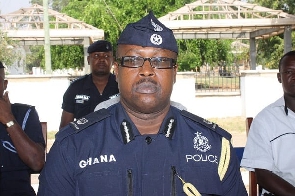Nation-building in the Ivory Coast was always bound to be bumpy. For one thing, the former French colony is just like dozens of other African states – a territory haphazardly carved out for 19th-century European industrial ambitions.
If we are being pedantic, we can say the Ivory Coast is a country trying to figure out how to be a nation.
This is not a problem uniquely descriptive of the Ivorian story. Even Ethiopia, a country not successfully colonized, is simmering with ethnic tensions and in Eastern Europe, some former USSR states continue to overcome the painful task of rising from the ashes.
Ivory Coast is a country divided along the thick lines of Christianity, Islam, and more than 30 ethnic groups although many of these are kinfolk in languages and other aspects of culture. Indeed, the largest single group in Ivory Coast are the Baoulé who come under the greater Akan umbrella which shelters the Asante and Fante of neighboring Ghana too.
It will be a hastened mistake to suggest that some organic bonding has not taken place among Ivory Coast’s peoples since founding as a country in 1960. For one thing, the conditions for ethnic dissipation were starved of oxygen due to first president Félix Houphouët-Boigny‘s authoritarianism.
Much like many of Africa’s independence leaders, Houphouët-Boigny saw a need to build a nation of different peoples by insisting on a higher plane of commonality. Statism, instead of ethnic identities, was greatly encouraged through education in schools.
In this fold, we may compare Houphouët-Boigny to Kwame Nkrumah, a man hated by the Ivorian leader but with whom Houphouët-Boigny shared contempt for African ethnocentricism. Nkrumah, in 1958, banned the founding of parties based on ethnic or religious identity after winning a referendum where he had pushed against federalism in Ghana.
Apart from the statist tradition he put in place, Houphouët-Boigny was also very much in support of what was known as Francafrique.
This was an ideology steeped in the supposition that the half of Africa that had been colonized by France have their destinies inextricably linked to that of France. Francophile presidents in Africa, including Leopold Sedar Senghor on Senegal, encouraged amity and cooperation with France, as a result of this supposition.
Francafrique had its opponents like Guinea’s Ahmed Sekou Toure who saw in the philosophy a poverty of imagination on the part of Africans who had to contend with the crisis of identity left by French colonization.
But statism and Francafrique worked to quiet down ethnic tensions in the Ivory Coast particularly well because of who Houphouët-Boigny was. He was a charismatic leader who had the majority of people behind him much of the time until his death in office in 1993.
After 33 years, Ivory Coast was suddenly forced to confront an artificially-solved issue. Furthermore, Houphouët-Boigny had succumbed to pressure from home and abroad to authorize multi-party democracy, further providing a legitimate avenue for the founding of parties by peoples who have felt unrepresented.
The country’s largely Christian southerners had always felt suspicious of the Muslim north while the latter had also, with good reason, felt the south simply did not care about them.
Ivory Coast’s northern towns continue to be the most impoverished parts of the country. Even though Yamoussoukro, in the center of the country, was named the capital city in 1983 as part of efforts to decentralize prosperity and move some development away from the vibrant coastal city of Abidjan, this process was so slow to date.
Now, the country simply counts both Abidjan and Yamoussoukro as capital cities although the seat of government is based in Abidjan.
The country was led by Henri Konan Bédié after Houphouët-Boigny. Bédié was the president of the legislative National Assembly who had to fight off a power struggle from Alassane Ouattara, prime minister at the time of Houphouët-Boigny’s death.
When he became president, Bédié sought to deal with an interesting problem: Who was really an Ivorian? It was quite clear Bédié had Ouattara, who now led the opposition Rally of the Republicans (RDR) in mind.
Ouattara was born to Burkinabe parents, or at least one of them, in pre-independent Ivory Coast and thus, had always considered himself Ivorian. Even by the reckoning of Houphouët-Boigny, Ouattara had to be Ivorian to come as far as the position of Prime Minister.
Ivoirité was not a new concept, having been theorized from the 1970s. It was a vaguely defined notion of who was an Ivorian which moved from the basis of exclusion of who is not Ivorian rather than casting in stone who is.
Bédié rolled back the years to delegitimize Ouattara. As often happens, when street chants are echoed by elected power, the chants take on a different dimension.
The hostility lingered, as part of a greater lacuna between the north and south. When Bédié himself was brought down by Robert Guei in the first-ever coup in Ivory Coast in 1999, it was cheered up-north.
When Laurent Gbagbo was episodically chased out of power between 2004 and 2011, the rebel group Patriotic Movement of Côte d’Ivoire, with their strong base in the north of the country, was chiefly responsible.
Resolutions after resolutions in the early 2000s aimed at healing a severely wounded nation have taken into cognizance the Ivoirité question.
When forces affiliated to Ouattara’s RDR party negotiated truces, they insisted on “identification [national recognition] before disarmament”.
Ouattara has been president since 2010 and now seeking a third term. In a 2016 constitutional amendment, a tentative solution to who is an Ivorian was crystallized but it is hard to see how this will not be challenged in the near future.
We can only this challenge never again comes with the toil of the last two decades.
Africa News of Saturday, 8 August 2020
Source: face2faceafrica.com

















